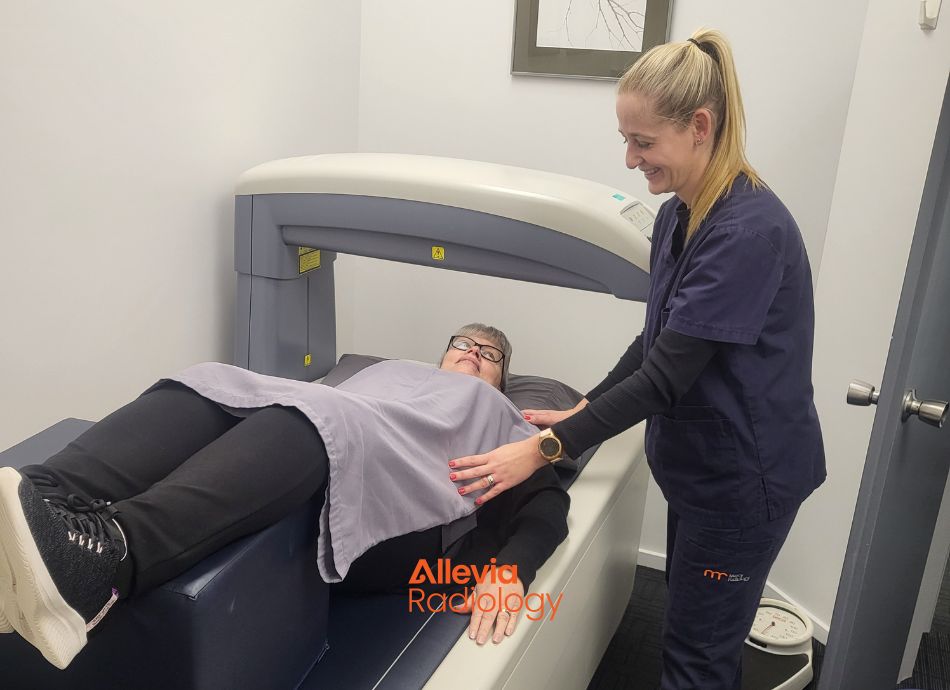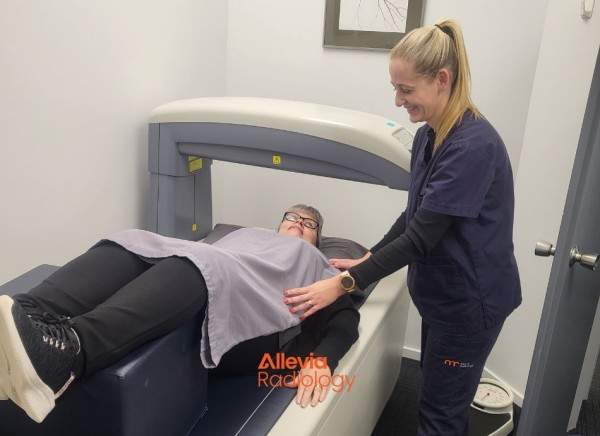Wishing everyone happy holidays and a joyful New Year from the Healthify team. Don't forget to Slip, Slop, Slap and Wrap!
DEXA scan
Also called a bone density scan
Key points about DEXA scan
- A DEXA (dual energy X-ray absorptiometry) scan uses X-ray equipment to check the density (strength) of your bones.
- That's why it's also known as a bone density scan. Generally, the denser the bone, with fewer air spaces, the stronger it is. This makes it less likely to break or fracture.
- The scan is a quick, painless procedure and you'll be able to go home after you've had it done.

DEXA stands for dual energy X-ray absorptiometry. A DEXA scan uses X-ray equipment to check the density (strength) of your bones which is why it’s also called a bone density scan.
The video below shows what happens in a DEXA scan.
Video: What to expect – bone density scan
Your healthcare provider might suggest you have a DEXA scan if you're at increased risk of developing a bone condition such as osteoporosis. Osteoporosis is a condition where your bones are thinner and weaker than normal. This means that they can break more easily, eg, after a small bump or fall.
You might be at risk of weaker bones if you:
- have a health condition such as arthritis, inflammatory bowel disease, coeliac disease, hyperthyroidism, auto immune disease, being under weight, low calcium intake, malnutrition.
- had early menopause (younger than 40 years of age)
- have been taking oral glucocorticoid medicines for 3 months or more
- have a parent or sibling who has had a fracture before 65 years of age
- have smoked or drunk a lot of alcohol over a prolonged time.
The results of the DEXA scan help your healthcare provider estimate your risk of fractures (broken bones). If you're having treatment for osteoporosis the scan can also be done to see how well the treatment is working.
The DEXA scan is performed using X-ray equipment and a computer. While you lie on a table, the scanner passes over your body with invisible low-dose X-ray beams. It sends the results to the computer which translates the density measurements into images and graphs.
- The scanning table is not enclosed.
- The scan usually takes between 10 and 20 minutes, depending on which part of your body is being examined.
- The technologist will give you instructions about positions to lie in and when to keep still.
- The technologist will stay in the room with you as DEXA scans are very safe.
- Having the scan is a quick, painless procedure and you'll be able to go home after you've had it done.

Image credit: Allevia Radiology, NZ
Getting the results
The results will be sent through to your healthcare provider and a member of your healthcare team will go through them with you.
Follow the instructions given to you by your healthcare provider.
- Wear loose, comfortable clothing, avoiding garments that have zippers, belts or buttons made of metal.
- You may be asked to change into a gown.
- You may be asked to remove jewellery, removable dental appliances and eye glasses if they could interfere with the X-ray images.
- Let your healthcare team know if you have any metallic implants in your body such as metallic screws or pins in your bones.
Tell your healthcare provider if:
- you've had any other scans recently
- you've had a barium examination recently as you may have to wait for a while before having a DEXA scan
- there's any chance you might be pregnant.
DEXA scans are not recommended for pregnant women unless absolutely necessary, in which case extra precautions will be taken to minimise the risk of exposing the unborn baby to radiation.
Watch a video What is a DEXA scan?(external link) Allevia Radiology, NZ
(external link)DEXA scan(external link) Patient Info, UK
DEXA scan – how it is performed(external link) NHS, UK
Resources
Bone density tests(external link) Choosing Wisely, NZ
References
- Bone density scan (DEXA)(external link) Auckland HealthPathways, NZ, 2022 (login needed),
- Prevention of osteoporosis(external link) BPAC, NZ, 2008
Credits: Healthify editorial team. Healthify is brought to you by Health Navigator Charitable Trust.
Reviewed by: Sam Malan, Medical Imaging Technologist, Allevia Radiology
Last reviewed:



